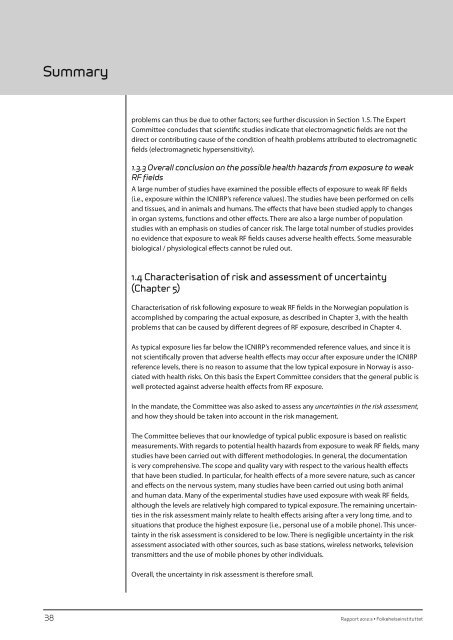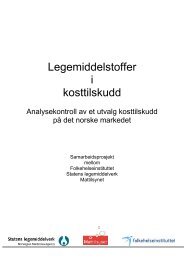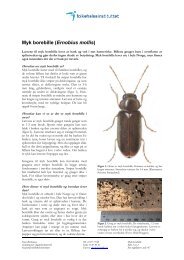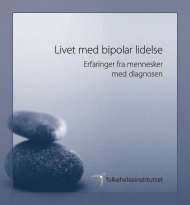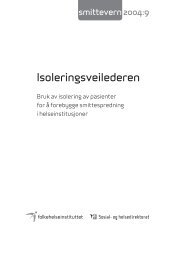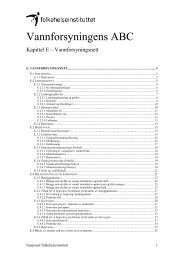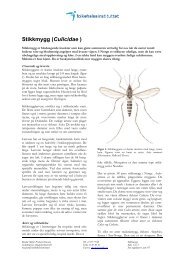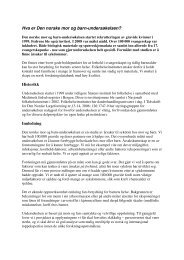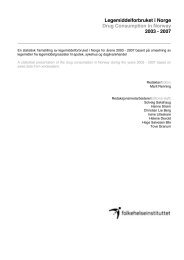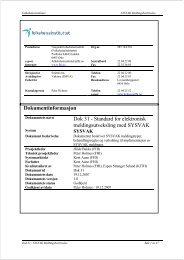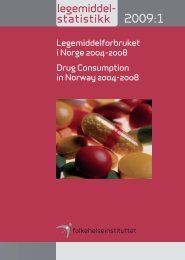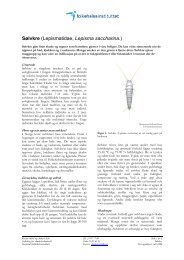rapport 2012:3 - Nasjonalt folkehelseinstitutt
rapport 2012:3 - Nasjonalt folkehelseinstitutt
rapport 2012:3 - Nasjonalt folkehelseinstitutt
You also want an ePaper? Increase the reach of your titles
YUMPU automatically turns print PDFs into web optimized ePapers that Google loves.
Summary<br />
problems can thus be due to other factors; see further discussion in Section 1.5. The Expert<br />
Committee concludes that scientific studies indicate that electromagnetic fields are not the<br />
direct or contributing cause of the condition of health problems attributed to electromagnetic<br />
fields (electromagnetic hypersensitivity).<br />
1.3.3 Overall conclusion on the possible health hazards from exposure to weak<br />
RF fields<br />
A large number of studies have examined the possible effects of exposure to weak RF fields<br />
(i.e., exposure within the ICNIRP’s reference values). The studies have been performed on cells<br />
and tissues, and in animals and humans. The effects that have been studied apply to changes<br />
in organ systems, functions and other effects. There are also a large number of population<br />
studies with an emphasis on studies of cancer risk. The large total number of studies provides<br />
no evidence that exposure to weak RF fields causes adverse health effects. Some measurable<br />
biological / physiological effects cannot be ruled out.<br />
1.4 Characterisation of risk and assessment of uncertainty<br />
(Chapter 5)<br />
Characterisation of risk following exposure to weak RF fields in the Norwegian population is<br />
accomplished by comparing the actual exposure, as described in Chapter 3, with the health<br />
problems that can be caused by different degrees of RF exposure, described in Chapter 4.<br />
As typical exposure lies far below the ICNIRP’s recommended reference values, and since it is<br />
not scientifically proven that adverse health effects may occur after exposure under the ICNIRP<br />
reference levels, there is no reason to assume that the low typical exposure in Norway is associated<br />
with health risks. On this basis the Expert Committee considers that the general public is<br />
well protected against adverse health effects from RF exposure.<br />
In the mandate, the Committee was also asked to assess any uncertainties in the risk assessment,<br />
and how they should be taken into account in the risk management.<br />
The Committee believes that our knowledge of typical public exposure is based on realistic<br />
measurements. With regards to potential health hazards from exposure to weak RF fields, many<br />
studies have been carried out with different methodologies. In general, the documentation<br />
is very comprehensive. The scope and quality vary with respect to the various health effects<br />
that have been studied. In particular, for health effects of a more severe nature, such as cancer<br />
and effects on the nervous system, many studies have been carried out using both animal<br />
and human data. Many of the experimental studies have used exposure with weak RF fields,<br />
although the levels are relatively high compared to typical exposure. The remaining uncertainties<br />
in the risk assessment mainly relate to health effects arising after a very long time, and to<br />
situations that produce the highest exposure (i.e., personal use of a mobile phone). This uncertainty<br />
in the risk assessment is considered to be low. There is negligible uncertainty in the risk<br />
assessment associated with other sources, such as base stations, wireless networks, television<br />
transmitters and the use of mobile phones by other individuals.<br />
Overall, the uncertainty in risk assessment is therefore small.<br />
38 Rapport <strong>2012</strong>:3 • Folkehelseinstituttet


